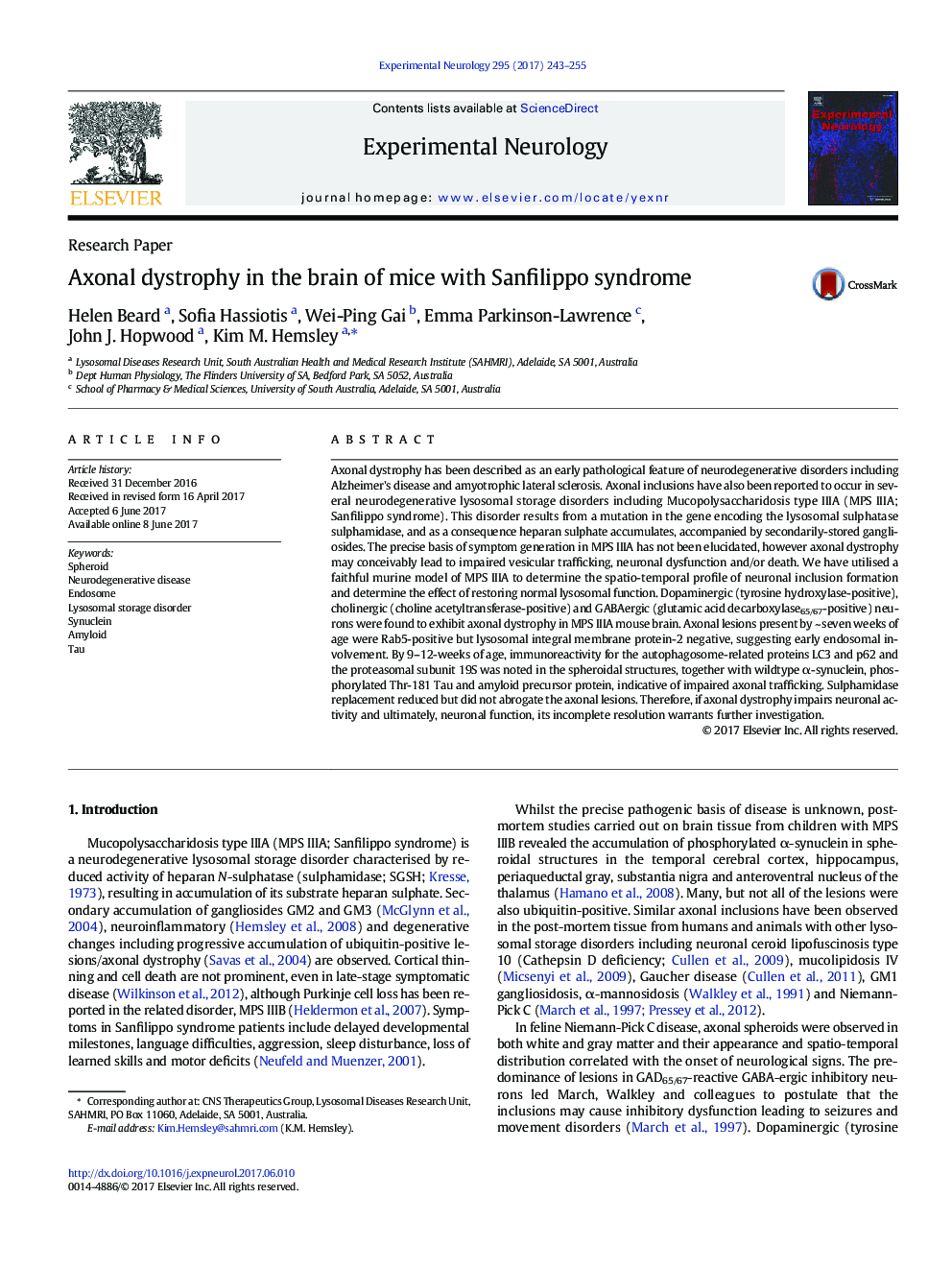| Article ID | Journal | Published Year | Pages | File Type |
|---|---|---|---|---|
| 5629123 | Experimental Neurology | 2017 | 13 Pages |
â¢Axonal pathology occurs in pre-symptomatic stages of murine MPS IIIA.â¢Multiple neuronal types are affected by axonal spheroids.â¢Rab5-immunoreactivity indicates early endosomal involvement in lesion formation.â¢Disease lesions are reduced but not abrogated by restoration of sulphamidase activity in young MPS IIIA mice.
Axonal dystrophy has been described as an early pathological feature of neurodegenerative disorders including Alzheimer's disease and amyotrophic lateral sclerosis. Axonal inclusions have also been reported to occur in several neurodegenerative lysosomal storage disorders including Mucopolysaccharidosis type IIIA (MPS IIIA; Sanfilippo syndrome). This disorder results from a mutation in the gene encoding the lysosomal sulphatase sulphamidase, and as a consequence heparan sulphate accumulates, accompanied by secondarily-stored gangliosides. The precise basis of symptom generation in MPS IIIA has not been elucidated, however axonal dystrophy may conceivably lead to impaired vesicular trafficking, neuronal dysfunction and/or death. We have utilised a faithful murine model of MPS IIIA to determine the spatio-temporal profile of neuronal inclusion formation and determine the effect of restoring normal lysosomal function. Dopaminergic (tyrosine hydroxylase-positive), cholinergic (choline acetyltransferase-positive) and GABAergic (glutamic acid decarboxylase65/67-positive) neurons were found to exhibit axonal dystrophy in MPS IIIA mouse brain. Axonal lesions present by ~ seven weeks of age were Rab5-positive but lysosomal integral membrane protein-2 negative, suggesting early endosomal involvement. By 9-12-weeks of age, immunoreactivity for the autophagosome-related proteins LC3 and p62 and the proteasomal subunit 19S was noted in the spheroidal structures, together with wildtype α-synuclein, phosphorylated Thr-181 Tau and amyloid precursor protein, indicative of impaired axonal trafficking. Sulphamidase replacement reduced but did not abrogate the axonal lesions. Therefore, if axonal dystrophy impairs neuronal activity and ultimately, neuronal function, its incomplete resolution warrants further investigation.
